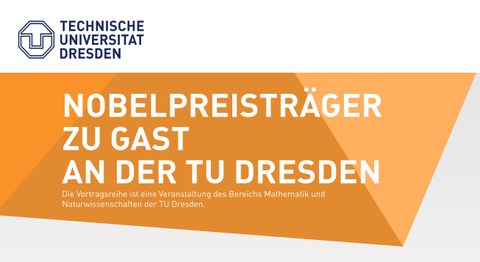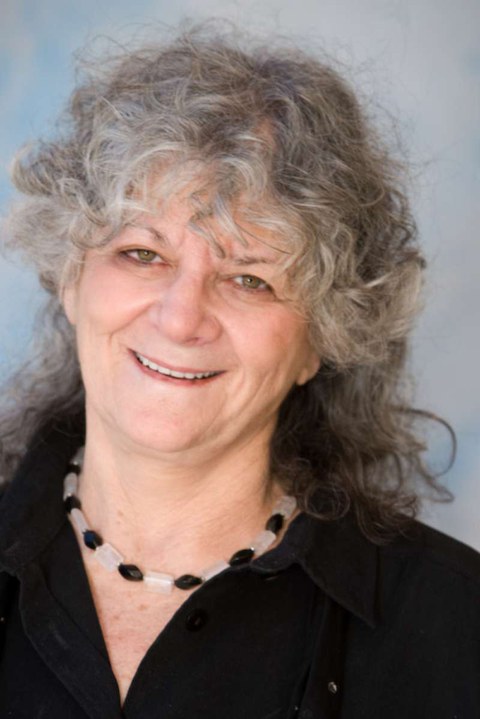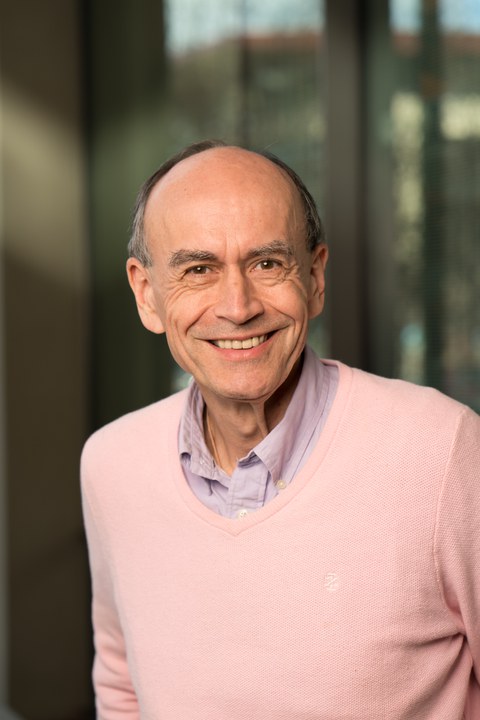Apr 25, 2019
Nobel vortex at TU Dresden
Nobel laureates explain protein factories, thinking machines, vortices in surfaces and ghost particles in water tanks
How do minute particles determine life and thought, processes in materials and in the universe: These are the questions that this year's "Nobel Laureates at TU Dresden" have been focusing on in their research. Over the past four years, the public lecture series "Nobel Laureates at TU Dresden" has established itself as one summer highlight of Dresden's scientific landscape. TU Dresden’s School of Science, which organises the series of events, is once again expecting up to one thousand guests per lecture in 2019. The Stockholm laureates will present their award-winning research to all interested parties on 24th and 26th April, 15th May and 3rd July.
Ribosomes have been the research focus of Ada Yonath, chemistry Nobel laureate, who will share her “Nobel science” with the audience at the TU Dresden Auditorium Centre on 24th April at 7 pm. Her lecture entitled “Ribosomes: A Connection Between The Far Past & Near Future” will present how ribosomes can be decoded to read out genetic information from RNA and also build proteins. Born in Jerusalem in 1939 under circumstances of considerable hardship, Ada Yonath remembers her desire to understand the principles of nature in particular. After her father’s death – Yonath was only 11 years old –, she supported her family through several side jobs. She studied chemistry, biochemistry and biophysics and, after serveral years of research, established the first Israeli laboratory for biological crystallography – which is the core of her research, leading to the 2009 Nobel Prize in chemistry along with Venkatraman Ramakrishnan and Thomas A. Steitz. The size of ribosomes was considered too complex to be crystallized – but Ada Yonath discovered that it could be managed by developing appropriate methods.
On 26th April at 6 pm, medicine Nobel Prize winner Thomas Südhof will make synapses glow with his lecture: "How Synapses Are Made". In his groundbreaking research, Südhof has been focusing on the nervous system’s information distribution centers. His family’s taste for anthroposophy and Waldorf education shaped Thomas Südhof’s childhood. He describes how he decided to study medicine since he lacked sufficient talent to succeed in the difficult areas of music, philosophy or history. After his studies, Südhof explored synapses, where nervous cells transfer information. He aimed to understand how and why the synaptic vesicles release the messenger substances they contain at the right point of time – and found Calcium ions that trigger the process. He was awarded the Nobel Prize in Physiology or Medicine in 2013, together with Randy W. Schekman and James E. Rothman. Medicine has provided him the fundamentals for his research on diseases with nerve cell failure, such as schizophrenia, depression or diabetes.
Michael Kosterlitz will take the audience with him on a "Random Walk Through Physics To The Nobel Prize" on 15th May at 7 pm. The Nobel Prize winner in physics was one of the first to successfully apply topology, a mathematical discipline, to physical problems. Topology plays an important role when it comes to characterising new and exotic materials. Kosterlitz attributes his talents in physics and mathematics to the necessity of compensating his unreliable memory with logical skills. In Cambridge, he studied physics, mathematics, chemistry and biochemistry. At the University of Birmingham he met David Thouless and came up with ideas about two-dimensional crystals, vortices and topology, whose application in physics could make robust quantum computers a reality. His research earned Kosterlitz the Nobel Prize shared with David Thouless and F. Duncan M. Haldane.
Takaaki Kajita proved that neutrinos have mass. On 3rd July at 7 pm, the Japanese particle physicist will invite Dresden audience members on the search for the "ghost particle" in his lecture: "Oscillating Neutrinos". Kajita, born in a rural area near Tokyo, focused on experimental particle physics early on. As a student, he was involved in the construction of the Japanese nuclear physics pioneer experiment "Kamiokande" – as well as the later construction of the successor “Super-Kamiokande”, where he carried out his award-winning research. Neutrinos were long regarded as massless. A 50,000-ton water tank in the Super-Kamiokande, 1,000 metres below the earth, captured various types of particles. Kajita's discovery: The expected muon neutrinos must have been converted into tau neutrinos – which required them to have a mass. This shook the standard model of elementary particle physics – and together with Arthur B. McDonald, himself a guest at TUD two years ago, Kajita won the Nobel Prize in Physics in 2015.
All those interested in "Nobel Science" are cordially invited to attend the four public lectures at the TU Dresden’s Auditorium Centre. Please register for the respective event at tu-dresden.de/mn/nobel.
Wednesday, 24th April 2019, 7 pm: Ada Yonath, 2009 Nobel Prize in Chemistry
Friday, 26th April 2019, 6 pm: Thomas Südhof, 2013 Nobel Prize in Physiology or Medicine
Wednesday, 15th May 2019, 7 pm: Michael Kosterlitz, 2016 Nobel Prize in Physics
Wednesday, 3rd July 2019, 7 pm: Takaaki Kajita, 2015 Nobel Prize in Physics
The lecutre series is hosted by TU Dresden’s School of Science and sponsored by Novaled, the Hotel Taschenbergpalais Kempinski and the Gesellschaft von Freunden und Förderern der TU Dresden e.V.
Media enquiries
Prof. Clemens Kirschbaum
phone: +49 (0) 351 463-3 75 12
Mail:



